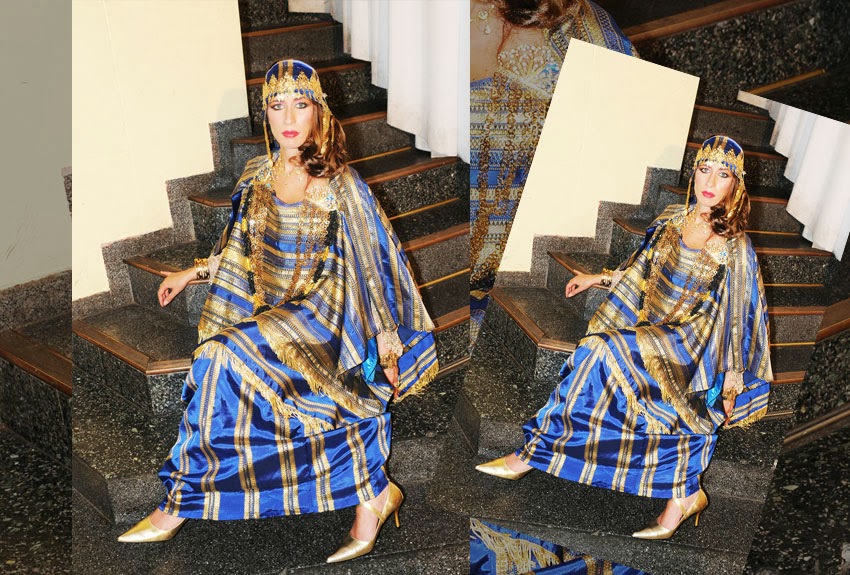Women work almost exclusively in the home, taking care of all domestic chores. Anything that involves leaving the house is taken care of by men, including shopping. Only 7 percent of women work outside the home, most of these in traditionally female professions such as secretarial work, teaching, or nursing. (However, this 7 percent does not include women who work in agriculture, and in farming communities; it is common for women as well as men to work in the fields.) Women are allowed to run for public office, but such attempts are still extremely rare.
The Relative Status of Women and Men. As in Arabic culture in general, women in Algeria are considered weaker than men, and in need of protection. Men are entrusted with most important decisions. Women live in a very confined circle of house and family; their only contact aside from male family members is with other women. Men, on the other hand, have a much broader sphere, which includes the mosque, the streets, marketplaces, and coffee shops. Independence did not bring much change in this realm. Although the new government adopted socialist principles, gender equality faced great opposition from conservative Islamic groups.
The Berbers have their own concepts and practices regarding gender, which vary widely among the different groups. The role of Kabyle women is most similar to the Arabic tradition; they are unable to inherit property or to remarry without the consent of the husband who divorced them. The Chaouia women, while still socially restricted, are thought to have special magical powers, which gives them a slightly higher status. The M'zabites advocate social equality and literacy for men and women within their villages but do not allow the women to leave these confines. The Tuaregs are an anomaly among Muslim cultures in that the society is dominated more by women than by men. Whereas it is traditional in Islam for women to wear veils, among the Tuaregs it is the men who are veiled. Women control the economy and property, and education is provided equally to boys and girls.
Marriage, Family and Kinship
Marriage. Marriages in Algeria are traditionally arranged either by parents of the couple or by a professional matchmaker. Despite its prevalence in Algeria, the influx of Western culture has had little influence in this realm, as the majority of marriages still are arranged. It is considered not just the union of two individuals, but also of two families. Wedding celebrations last for days, including music, special sweets, and ritual baths for the bride. The groom covers the costs of the festivities.
By a law passed in 1984, women gained the right to child custody and to their own dowries. However, the law also considers women permanent minors, needing the consent of their husbands or fathers for most activities, including working outside the home. The decision to divorce rests solely with the husband. It is still legally permissible, although rare, for men to have up to four wives, a code that is laid out in the Qurán (Koran).
Kabyle Robe

















The basic Kabyle dress is a silk-like kaftan which can be any of a whole range of colours (although white and yellow are particularly popular). It will have very distinctive embroidery around the neckline, the bottom hem and the sleeves. It can be worn alone but is often accompanied with a bright red cotton wrap-around garment woven with yellow, dark red and orange. The Kaftan is often belted and arranged so that it puffs out. A headscarf and, of course, jewellery may also be worn to complete the outfit. The traditional Kabyle dress is worn by small children and 90 year old women alike. It is something that people cherish and enjoy wearing today as they have done for hundreds of years. There are of course many other typically Kabyle dresses both traditional and modern. Dresses can differ in style, colour and fabric enormously but each is still recognisably Kabyle.
Algerian Burnoose
A long hooded cloak woven of wool in one piece; worn by Arabs and Berbers. Some versions are split up the front, others closed like a poncho. The Burnoose was never an Ottoman garment, but rather, was worn in North Africa. There is one extant garment, found on the body of Bishop Timotheos, in 14th century Egypt. The word Burnoose is currently in use in Algeria, when the same garment is called Selham in Morocco.Algerian Bridal Clothing
Chedda Tlemc
Fergani Dress (Robe Fergani)
Karakou
Kabyle Dress (Robe Kabyle)
Chaoui Dress (Robe Chaoui)
Kaftan (قفطان)
Keswa

HOME















































1 comment: